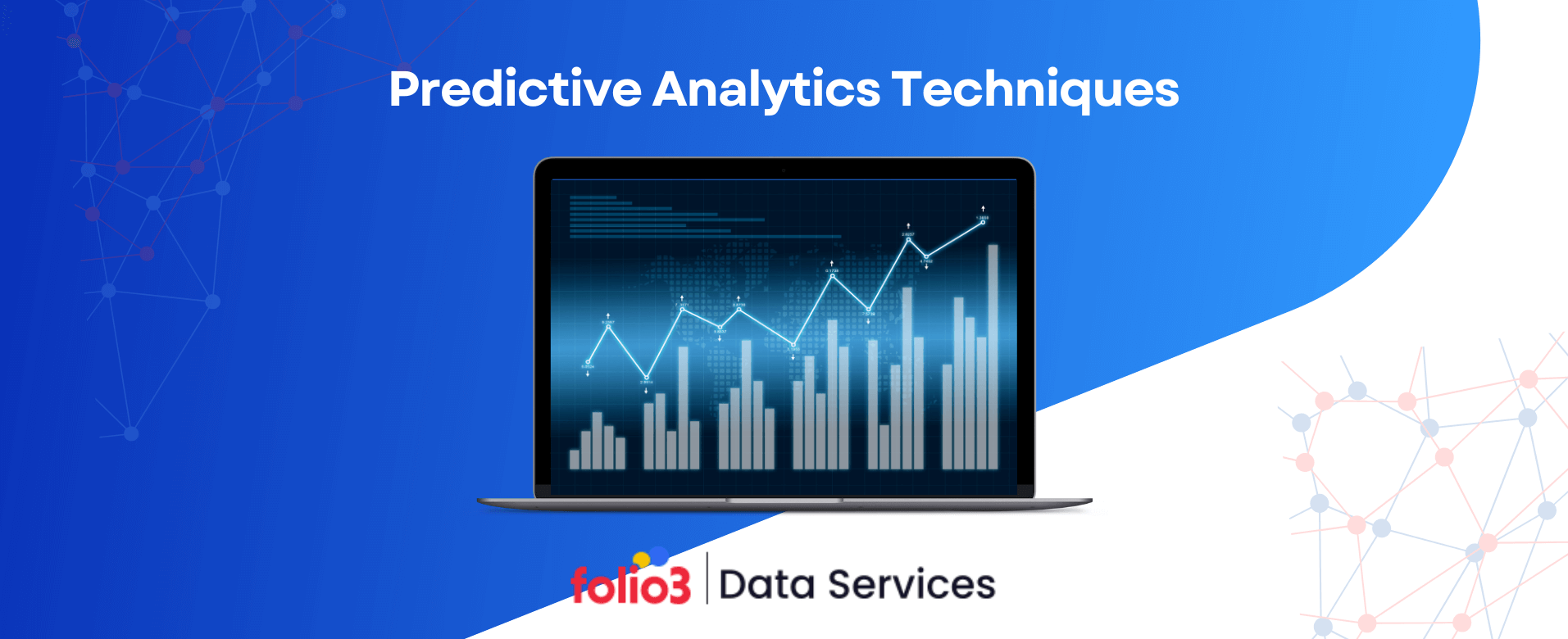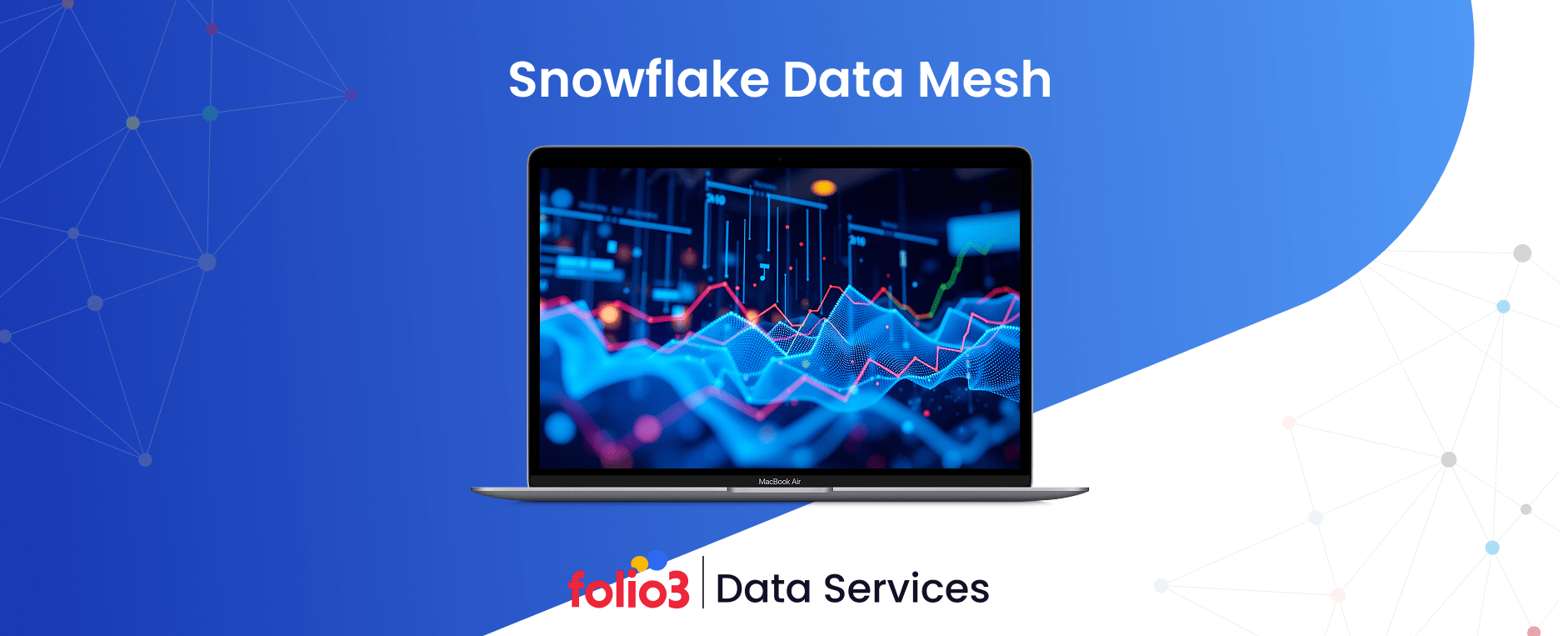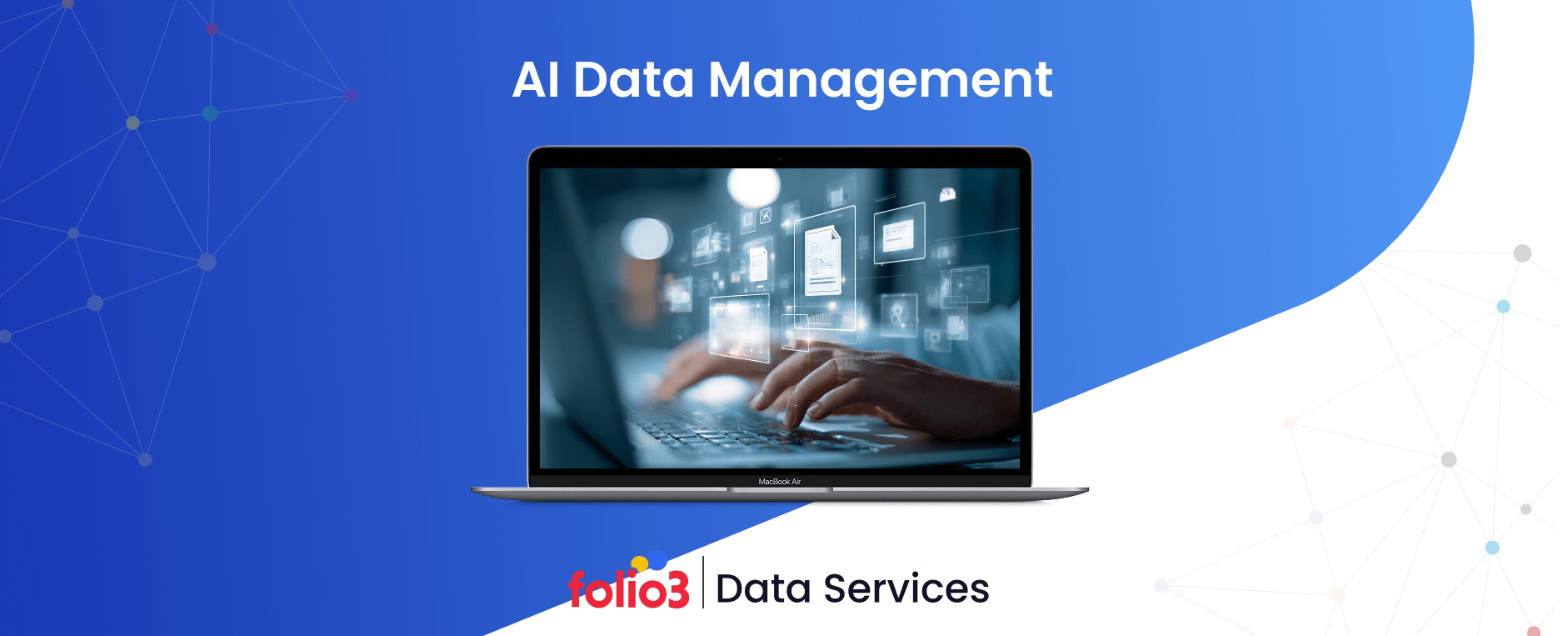Predictive analytics techniques have emerged as a cornerstone for business success. According to studies, with global big data analytics expected to surpass reach $1.1 trillion by 2032, growing at a CAGR of 14.5%, organizations are using these methods to forecast future trends, optimize operations, and gain a competitive edge.
From reducing churn rates in subscription services to improving patient outcomes in healthcare, predictive analytics methods are transforming industries by turning raw data into actionable insights. Predictive analytics tools and techniques combine statistical algorithms, machine learning, and data mining to anticipate future outcomes based on historical data.
For instance, a recent study by Forbes revealed that companies using advanced predictive analytics techniques are 5.3 times more likely to achieve data-driven decision-making success. But what are the top methods of predictive analytics driving this revolution?
This article will explore the most effective predictive analysis techniques, discussing their real-world applications and how businesses can use these techniques to stay ahead.
Top Predictive Analytics Techniques
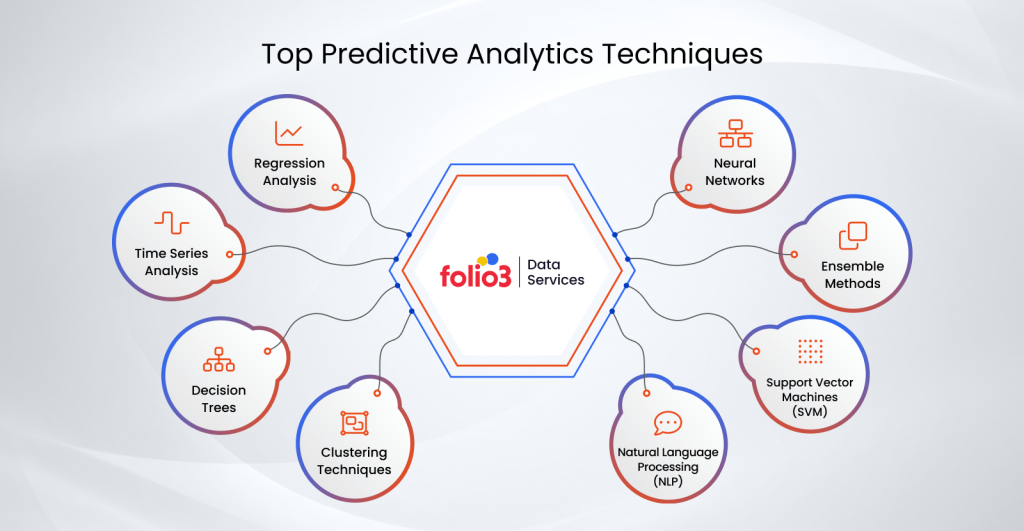
The techniques below are theoretical tools and actionable methods that have driven significant real-world results. For instance, according to a Gartner report, over 80% of businesses that integrate predictive analytics methods see a substantial improvement in operational efficiency and customer satisfaction.
Companies utilizing the following techniques can forecast demand, prevent equipment failures, and even enhance marketing strategies, leveraging big data predictive analytics to outpace competitors:
1. Regression Analysis
Regression analysis is a foundational predictive analytics technique frequently used in data analytics to uncover relationships between variables. By modeling the connection between a dependent variable and one or more independent variables, businesses can forecast outcomes such as sales growth, customer lifetime value, or pricing trends. For example, retail companies often use regression analysis to predict seasonal demand patterns.
2. Time Series Analysis
Time series analysis is a predictive technique focused on sequential data over time. It’s widely employed in scenarios where patterns and trends evolve over periods, such as stock market forecasting, weather prediction, or website traffic analysis. Advanced predictive analytics techniques in time series include ARIMA models and exponential smoothing, which offer precise trend and seasonality insights.
3. Decision Trees
Decision trees are intuitive predictive modeling techniques that simplify complex decision-making. They split data into branches based on specific conditions, leading to easily interpreted outcomes. These predictive analytics methods are popular in credit scoring, fraud detection, and customer segmentation due to their clarity and efficiency.
4. Clustering Techniques
Clustering groups similar data points together, uncovering hidden patterns within datasets. Businesses often rely on clustering as a type of predictive analytics for market segmentation, identifying customer preferences, or detecting anomalies in network security. K-Means and DBSCAN are standard clustering algorithms used in big data predictive analytics.
5. Neural Networks
Neural networks mimic the human brain’s structure to analyze complex datasets. These advanced predictive analytics techniques are highly effective in image recognition, predictive maintenance, and personalized recommendations. For instance, e-commerce platforms use neural networks to suggest products based on user behavior.
6. Ensemble Methods
Ensemble methods combine multiple predictive models to improve accuracy and reliability. Techniques like Random Forest and Gradient Boosting are examples of how this approach enhances model performance. Ensemble methods are frequently used in Predictive analytics in healthcare to predict patient outcomes or in finance for credit risk analysis.
7. Support Vector Machines (SVM)
Support Vector Machines are powerful predictive analytics tools and techniques for classification problems. They create optimal boundaries between data points to distinguish different classes, making them ideal for applications like sentiment analysis, handwriting recognition, or image categorization.
8. Natural Language Processing (NLP)
Natural Language Processing enables machines to understand and interpret human language. This method of predictive analytics is widely used in chatbots, sentiment analysis, and document classification. By leveraging NLP, businesses can apply predictive analysis methods to analyze customer feedback or social media data, identify trends, and improve engagement.

Key Steps in Implementing Predictive Analytics Techniques
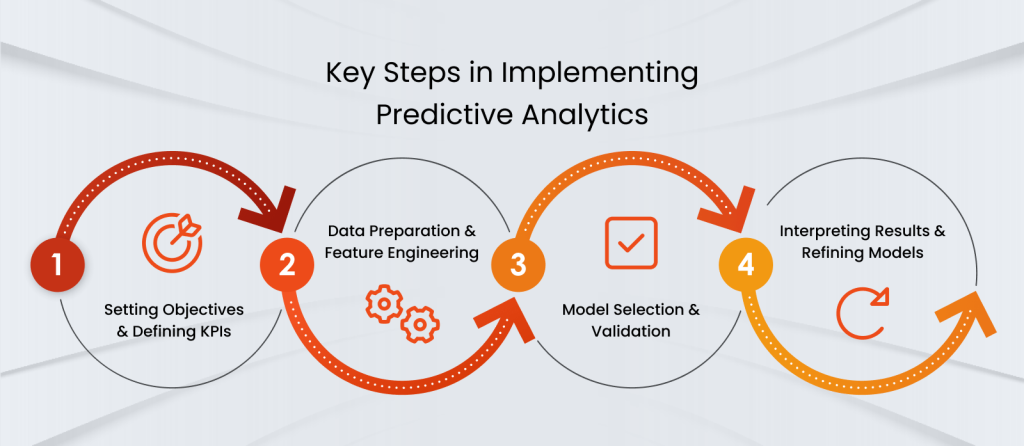
Organizations must follow a structured approach to ensure accuracy, scalability, and actionable insights to maximize the power of predictive analytics techniques fully. Implementing these techniques requires meticulous planning and execution, with each step contributing to the initiative’s overall success.
Here, we’ll explore the key steps in applying predictive analytics methods effectively.
1. Setting Objectives and Defining KPIs
The first step in implementing predictive analysis techniques is identifying clear objectives. Organizations must ask: What do we aim to achieve with predictive analytics? These objectives range from forecasting sales trends to improving customer retention or optimizing supply chains using big data predictive analytics.
Predictive analytics services can aid in this process by providing expertise, tools, and tailored solutions that align with your business goals. Defining Key Performance Indicators (KPIs) is equally critical to measuring success. For example, an e-commerce company may set KPIs such as increased conversion rates, reduced cart abandonment, or improved customer lifetime value. This step ensures that predictive modeling techniques align with business goals and establish a framework for evaluating effectiveness.
A well-defined objective and KPI framework not only streamlines efforts but also aids in selecting the most suitable type of predictive analytics for your specific challenge.
2. Data Preparation and Feature Engineering
Data preparation is the foundation of effective predictive analytics. This step involves cleaning, organizing, and transforming raw data to ensure it is ready for analysis. For instance, missing values, duplicates, or outliers must be addressed to maintain the integrity of the dataset.
Feature engineering, a vital part of advanced predictive analytics techniques, involves creating new variables or attributes from raw data that enhance the predictive power of models. For example, engineers may derive features such as customer purchase frequency or average order value in a retail scenario — a key consideration for Retail predictive analytics initiatives.
High-quality data preparation also involves integrating data from multiple sources, such as CRM systems, IoT devices, or big data platforms, making predictive analytics tools and techniques more robust and reliable.
3. Model Selection and Validation
The next step is choosing the appropriate predictive modeling techniques based on the problem. For instance, regression analysis is ideal for forecasting continuous outcomes like sales, while decision trees are better suited for classification problems such as customer segmentation.
Selecting the right predictive analytics methods ensures the model aligns with business needs and objectives. Once a model is chosen, validation becomes critical. This involves splitting the dataset into training and testing sets to evaluate the model’s performance and ensure it generalizes well to new data.
Techniques like cross-validation and grid search are often used to fine-tune hyperparameters, enhancing the performance of the applied predictive analysis methods. A well-validated model minimizes errors and increases confidence in its predictions.
Organizations often rely on data strategy and consulting experts at this stage to ensure that model choices and validation frameworks align with larger business goals and data governance practices.
4. Interpreting Results and Refining Models
The final step in implementing predictive analysis techniques is interpreting the results and refining the model. Visualization tools like dashboards or heatmaps can help stakeholders understand complex data insights. For instance, a business might use predictive analytics tools and techniques to display churn predictions in a customer retention dashboard.
Refinement involves revisiting earlier steps to address shortcomings. If the model’s predictions fall short of expectations, it might indicate issues with feature selection, data quality, or the chosen type of predictive analytics. Iterative refinement ensures that the model becomes more accurate and reliable over time.
Real-time applications of big data predictive analytics, such as fraud detection or supply chain optimization, particularly benefit from this ongoing refinement process, ensuring adaptability to dynamic conditions.
Folio3 Predictive Analytics Solutions for Growth
Folio3 works closely with businesses to turn data into actionable insights. With predictive analytics, organizations can make smarter decisions, improve operations, and stay ahead of the competition. By analyzing historical and real-time data, companies can spot trends early, uncover new opportunities, and tackle challenges before they escalate, all with the help of Folio3’s analytics solutions.
Key Predictive Analytics Services:
- Regression Analysis – Use past data to forecast sales, demand, and financial trends.
- Time Series Modeling – Predict seasonal patterns, stock levels, and market changes.
- Decision Trees – Break down complex decisions into clear, actionable steps.
- Clustering Techniques – Discover customer groups and detect unusual patterns.
- Neural Networks – Analyze complex datasets for smarter recommendations and maintenance planning.
- Ensemble Methods – Combine different predictive approaches for better accuracy.
- Support Vector Machines (SVM) – Classify data for insights like customer behavior or market segmentation.
- Natural Language Processing (NLP) – Extract insights from text, customer feedback, and social media.
FAQs
What are the types of predictive analytics methods?
Key predictive analytics methods include regression analysis, time series analysis, clustering, decision trees, neural networks, and natural language processing (NLP).
How do businesses use big data predictive analytics?
Businesses use big data predictive analytics to improve decision-making, enhance customer experiences, forecast demand, prevent fraud, and optimize operations.
What are some advanced predictive analytics techniques?
Advanced techniques include neural networks and ensemble methods like random forest, gradient boosting, and natural language processing to analyze unstructured data.
How necessary is data preparation in predictive analysis techniques?
Data preparation is crucial as it ensures data quality, removes inconsistencies, and enhances model accuracy through cleaning, integration, and feature engineering.
What are the best predictive analytics tools and techniques for beginners?
For beginners, tools like Python (with libraries like Scikit-learn), R, and Excel offer accessible predictive modeling techniques like regression, decision trees, and clustering.
